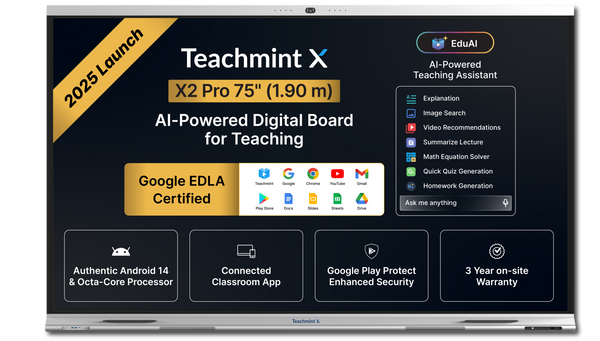Imagine walking into a classroom where every student leans forward, pencils down, eyes fixed on the screen at the front. Instead of yawns and wandering gazes, you see animated discussions and impromptu collaborations. This transformation isn’t magic it’s the result of integrating a digital board into everyday lessons. By harnessing interactive learning, digital boards turn passive listeners into active participants, making education both memorable and meaningful.
The Engagement Challenge in Today’s Classrooms
Educators face an uphill battle: students are bombarded by notifications, videos, and social media throughout the day. Traditional lectures and static slides struggle to compete. When content feels disconnected from a student’s digital life, interest wanes. Classrooms need tools that bridge this gap tools that speak the language of screens and touch.
In this context, a digital board for teaching becomes a game-changer. It’s not just a screen; it’s a portal to immersive experiences where learning feels as natural as swiping through a favorite app.
Multi-Sensory Learning: Capturing Every Student’s Attention
One of the most powerful aspects of a digital board is its ability to engage multiple senses simultaneously:
- Visual Engagement: Teachers can display high-resolution images, videos, and infographics that bring abstract concepts to life.
- Auditory Stimuli: Embedding audio clips or podcasts adds another layer of comprehension, catering to auditory learners.
- Kinesthetic Interaction: With touch-sensitive screens, students physically manipulate objects dragging, rotating, or drawing which reinforces neural pathways through hands-on activities.
By appealing to sight, sound, and touch, digital boards ensure that lessons resonate with every learner, regardless of their preferred style.
Fostering Collaboration and Peer Interaction
Learning isn’t a solo journey; it thrives in a collaborative environment. Digital boards invite multiple students to share the screen at once, whether they’re:
- Brainstorming ideas in real time
- Annotating a shared diagram
- Voting on discussion prompts via live polls
This multi-user capability turns the board into a communal workspace. Students learn from each other, practice respectful communication, and develop teamwork skills vital for tomorrow’s workforce.
Instant Feedback with Real-Time Assessment
Immediate feedback is a cornerstone of effective teaching. With traditional quizzes, students wait days for results and misconceptions can take root. Digital boards offer real-time feedback through integrated quizzes and polls:
- Live Polling: Pose a question mid-lesson and see results instantly.
- Interactive Quizzes: Embed short assessments within slides, automatically tallying scores.
- Instant Annotations: Teachers correct work on-screen, guiding students through errors on the spot.
This cycle teach, assess, adjust keeps lessons dynamic and ensures that no student falls through the cracks.
Encouraging Active Participation
When the only options are listening or note-taking, student engagement suffers. Digital boards transform lectures into conversations:
- Drag-and-Drop Exercises: Students match vocabulary words to definitions or place historical events on timelines.
- On-the-Fly Sketching: From geometric proofs to biology diagrams, learners draw directly on the screen.
- Role-Play Simulations: In language classes, students adopt avatars on-screen and interact in real-world scenarios.
By turning students from spectators into co-creators, digital boards foster genuine investment in the learning process.
Customizing Lessons for Diverse Learners
No two students are the same. Differentiated instruction is essential, but customizing paper worksheets for each learner can be overwhelming. Digital boards simplify personalization:
- Adaptive Learning Modules: Software that adjusts question difficulty based on student responses.
- Individual Workspaces: Students complete tasks on personal devices while teachers monitor progress centrally.
- On-Demand Resources: Supplementary videos, practice games, or advanced challenges available with a tap.
This flexibility ensures every student works at a pace and level that promotes confidence and growth.
Bringing Lessons to Life with Multimedia Integration
Static text and bullet points pale beside vivid simulations and real-world footage. With a best digital board for teaching, teachers seamlessly weave multimedia into their narratives:
- Virtual Field Trips: Explore the Amazon rainforest or journey through the solar system without leaving the classroom.
- Interactive Science Labs: Simulate chemical reactions or physics experiments safely and repeatably.
- Historical Reenactments: Watch primary-source videos and overlay annotations for deeper analysis.
These immersive experiences spark wonder and deepen comprehension, making facts stick long after the bell rings.
Practical Tips for Maximizing Engagement
Introducing technology is only half the battle; sustained impact requires thoughtful practice. Here are some proven strategies:
- Plan Interactive Moments: Identify points in your lesson for polls, quizzes, or drag-and-drop tasks.
- Rotate Student Roles: Assign different students to lead board activities facilitator, scribe, or quizmaster.
- Blend Analog and Digital: Begin with a quick whiteboard sketch before transitioning to multimedia content.
- Encourage Reflection: After group work, ask students to share insights directly on the board using sticky-note apps.
- Set Clear Guidelines: Establish norms for respectful use no overwriting peers’ work and proper digital etiquette.
By embedding these practices, educators turn a digital board from a novelty into an integral pedagogical partner.
Measuring Impact: Data-Driven Insights
Technology shines when it yields data. Digital boards collect rich usage metrics:
- Participation Logs: Track who interacts, how often, and in what ways.
- Quiz Analytics: Identify questions with low success rates and adjust instruction.
- Content Usage: See which videos or apps resonate most with your class.
These insights help teachers refine lessons, allocate time where it’s most needed, and showcase the tangible benefits of interactive learning to administrators and parents.
Overcoming Common Concerns
Some educators hesitate, fearing technical glitches or steep learning curves. Address these worries proactively:
- Reliable Support: Choose vendors offering prompt on-site maintenance and easy-to-access tutorials.
- Scalable Training: Start with small pilot groups, then train additional staff using peer mentors.
- Robust Infrastructure: Ensure stable internet connectivity and power backups in every classroom.
- Clear Objectives: Define specific engagement goals higher quiz participation rates or more group presentations to guide implementation.
With the right support and planning, digital boards become seamless classroom tools rather than sources of frustration.
The Future of Engagement
As education evolves, the bar for engagement will only rise. Virtual reality, AI-driven tutoring, and global collaboration networks are on the horizon. But at the core remains the need for interactive, student-centered experiences. Digital boards pave the way, providing a sturdy foundation for whatever innovations come next.
Conclusion
Student engagement isn’t a buzzword it’s the lifeblood of effective education. By embracing digital boards, educators unlock a world where lessons resonate, learners collaborate, and every voice is heard. Through interactive learning, collaborative environments, real-time feedback, hands-on activities, and multimedia resources, the classroom transforms into a vibrant ecosystem of curiosity and discovery. The future of education is already here bright, touch-enabled, and profoundly engaging.










